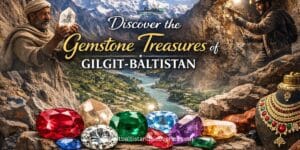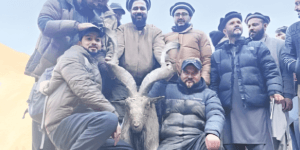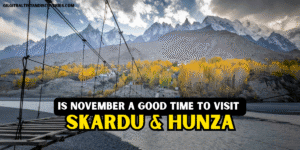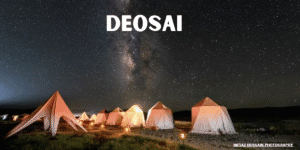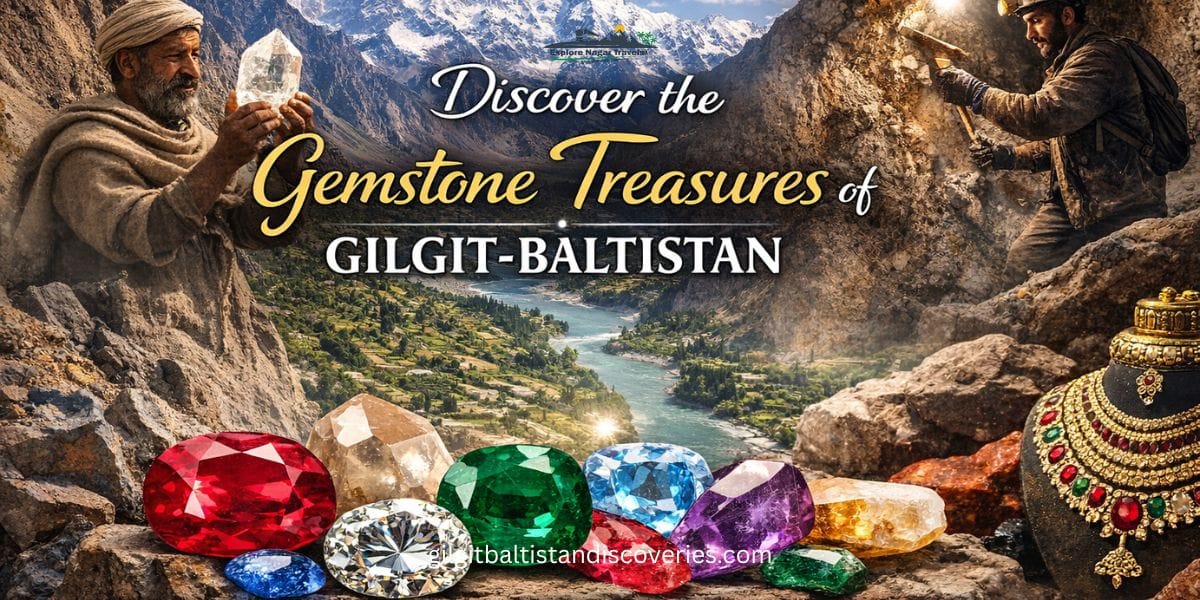Have you ever met someone who can speak dozens of languages and invites you to tea without a second thought? Does that sound unreal? Well, that’s normal in Gilgit Baltistan. In this guide, let’s meet the Gilgit Baltistan people.
Gilgit Baltistan, situated in Pakistan, is a famous visitor tourist point. Surrounded by landscapes, rugged mountains, and crystal-clear lakes, it attracts many tourists worldwide. So, if you plan a trip to Gilgit, knowing more about the locals is crucial before leaving. Stick with us to explore the customs, traditions, and languages they speak.
Read more: All about Gilgit Baltistan- Travel Northern Pakistan in 2024
Table of Contents
ToggleDiverse Ethnic Groups of Gilgit Baltistan people
In Gilgit Baltistan, diversity isn’t just a concept; it’s a way of life. Each tribe’s language and customs add color to the picture. Hence, the major ethnic groups include the Balti, Shina, Wakhi, and Burusho.
But what sets each of these communities apart? Let’s discuss it and learn something interesting about its people.
Balti
Imagine living in a beautiful valley surrounded by mountains, where every function of life is influenced by Tibetan culture. That’s Baltistan, where the Balti people live. They are famous because of their warm and welcoming nature. In addition, their festivals, such as Jashn-e-Nauruz, are all about language, life, and colors.
Shina
The speakers mainly speak Shina in the Gilgit district. If you love to hear stories, the Shina people can entertain you with their folk tales and traditional dances. These people are also attached to nature. But what sets them apart is their deep connection with their roots even after being modernized.

Wakhi
The Wakhi people live in the upper Hunza region. Their friendly nature and unique Wakhi language sets them apart. However, their language is an Eastern Iranian language, which they call “Khik zik.
Wakhi people work actively to ensure the continuity of their traditions and culture, which makes them unique among other Gilgti people.
Burusho
The Burusho people live in Hunza and Nagar. These people speak a language called Burushaski. It is said that the Burusho people can live to 120 years, but this is a myth not scientifically proven. However, their longevity is associated with their simple lives, fresh mountain air, and calm atmosphere.
These various groups make Gilgit’s culture colorful with their unique traditions and tales. They live together, hence creating a strong and diverse community.
Also Read: History of Gilgit Baltistan
Languages spoken by Gilgit Baltistan People
Gilgit Baltistan is a mixture of languages that reflects the rich cultural variety found within the region. Major languages spoken by the Gilgit Baltistan people include:
- Shina
- Balti
- Burushaski
- Wakhi
- Khowar
- Pashtu
Every language has its own history and tradition. This will help the next generation stick to its cultural roots.
Religion of Gilgit Baltistan People
People in Gilgit Baltistan are mostly Muslims. The predominant population consists of Nizari, Ismaili, and Shia Muslims. But there are also Sunni Muslims and several other minorities. Therefore, offering prayers and celebrating festivals like Eid al-Fitr and Eid al-Adha means a lot to them.

Traditional Clothing and Dress Styles
If you plan to visit Gilgit, try their traditional clothes to feel at home. Their clothes reflect cultural pride and a reflection of their unique environment.
Let’s have a look into the traditional dress styles of the Gilgit Baltistan people:
Men’s Attire
Khoi: This is a traditional woolen cap, usually of earthy shades, and is something more than to keep one warm. It’s mountain fashion and stylish accessory. Just think of a hat on your head acting like a warm blanket!
Shalwar Kameez: Men wore shalwar kameez made of warm fabric. Therefore, these clothes are also suitable for the cold climate of this area.
Women’s Attire
Bright Color Dresses: Ladies from Gilgit Baltistan wear colored dresses full of embroidery. The embroidery generally contains the traditional patterns that reflect the skill of the local craftswoman.
Headscarves and Shawls: Women also wear beautifully patterned headscarves and shawls to complement their dresses. These are functional accessories, providing warmth, and at the same time adding an extra layer of style to their outfits.
Accessories
Jewelry is typically made of silver and includes earrings, necklaces, and bracelets with semi-precious stones. Thus, these ornaments make them attractive and are passed as gifts within the family.
In other words, traditional attires in Gilgit Baltistan do more than keep the people of Gilgit Baltistan warm. They tell us a story of history, culture, pride, and identity.
Festivals Celebrated by Gilgit Baltistan People
The people of Gilgit Baltistan are in love with the celebrations of their culture and traditions. These festivals are a source of happiness for the locals. Because they not only provide them an opportunity to be joyful, friendly, and united but also reflect their civilization.
Let’s have a look at some of the major festivals that take place in this region:
Jashn-e-Nauroz
It is the Persian New Year, which announces the arrival of spring. However, for people in Gilgit Baltistan, Nauruz is much more fun than the arrival of a new year. This cultural festival is all about colors and fun.
Ginani Festival
The Ginani Festival marks the start of the harvest season. It’s a time when the people of Gilgit Baltistan thank nature for a good harvest and pray for prosperity. In the fields, people get together to share traditional food, sing, and dance to celebrate this time of the year.
Shandoor Polo Festival
Polo is the “King of Games.” It plays a significant part in the culture of Gilgit Baltistan. On Shandoor Pass, known as the highest polo ground in the world, two teams get together and play against each other. Therefore, these events reflect sportsmanship and enthusiasm amongst the Gilgit Baltistan people.
Babusar Festival
It is celebrated in the region of Babusar to promote local culture and tourism. The event is vibrant, with sports competitions, traditional music, and food stalls that invite people from everywhere.
These festivals give us a look into the culture and traditions of the Gilgit Baltistan people. They reflect their unity, customs, and love for their land. Every festival tells a story of the region’s past, which has been preserved through the ages in a colorful way of life.
Read more: Best places in Gilgit Baltistan
Occupations among Gilgit Baltistan people
The Gilgit Baltistan people are a part of several professions that reflect their cultural traditions. Here are the common occupation options:
Agriculture
They grow crops such as wheat, barley, and potato. In addition, fruits like apricots and apples are also cultivated in some areas. However, apricots are significantly cultivated in Hunza Valley.
Livestock Farming
Animal husbandry is one of the major occupations. People also raise yaks, goats, sheep, and cows at home. These animals produce raw materials like milk, meat, and wool.
Handicrafts
Gilgit Baltistan people make wonderful handicrafts. Then, they sell it to the local markets or the tourists.
Tourism
Gilgit Baltistan also attracts tourists to this region. Therefore, by acting as guides, they provide shelter and tourism to travelers so that they can make money.
Also read: Gilgit Baltistan Cherries-The hidden gem of Pakistan
Conclusion
The people of Gilgit-Baltistan are as colorful as the landscapes that surround them. From the rich cultural heritage to the warm hospitality, each community adds to the region’s charm differently. Be it their colorful festivals or local cuisins Gilgit Baltistan people are unique in their traditions.
So next time you plan a trip, remember that Gilgit-Baltistan is not a destination. In fact, it’s an adventure that will lead you to the beautiful people of Gilgit.
Have you ever been to Gilgit and experienced its hospitality? If so, please leave a comment; we would love to hear your stories!
FAQs about Gilgit Baltistan People
What are the major ethnic groups in Gilgit Baltistan?
The major 4 ethnic groups include:
- Balti
- Shina
- Burusho
- Wakhi
Which language is spoken in Gilgit Baltistan?
Most of the population speaks Shina, but other languages, such as Balti, Burushaski, and Pashtu, are also common.
Is Gilgit-Baltistan included in Pakistan?
Yes, Gilgit-Baltistan is a part of Pakistan. It is an administrative region in northernmost Pakistan, famous for its landscapes and cultural diversity.
Can Indians go to Gilgit?
Indians cannot travel to Gilgit-Baltistan without a visa because of political and territorial controversies.
What kind of Gilgit Baltistan People are?
The Gilgit Baltistan people are famous for their cultural diversity and hospitality. They are proud of their unique traditions and heritage.

